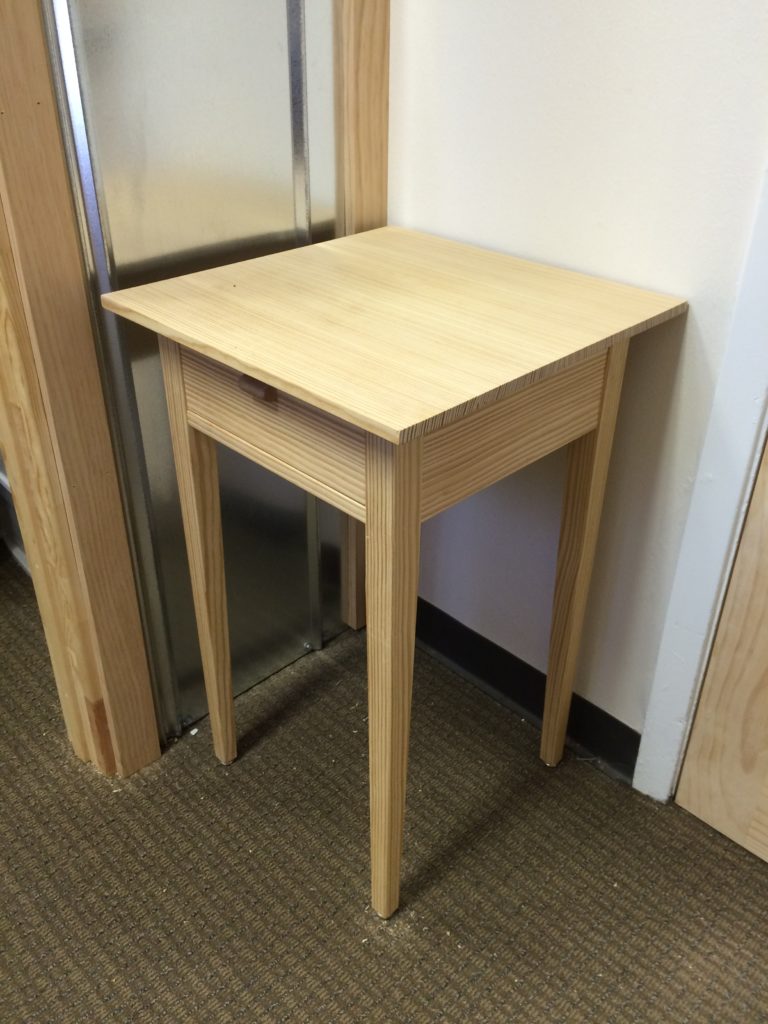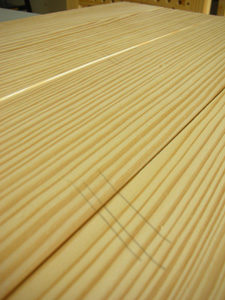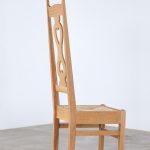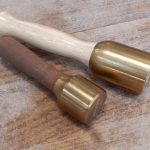We may receive a commission when you use our affiliate links. However, this does not impact our recommendations.
 In my last article, I discussed big box store construction lumber (SYP – Southern yellow pine) and its use in furniture. I’ve found that it’s cheap, high in moisture and needs consideration in selection and prep.
In my last article, I discussed big box store construction lumber (SYP – Southern yellow pine) and its use in furniture. I’ve found that it’s cheap, high in moisture and needs consideration in selection and prep.
Working with construction lumber is a unique experience and a great learning material.
Southern yellow pine typically has wide growth rings (which means it grows fast) and has some of the hardest and the softest grain imaginable. This bipolar personality of hard and soft wood is the root of its working personality. The transition between the two densities causes it to split and splinter easily. The hard late growth will destroy blade edges and the soft early growth will crumble under anything but the sharpest of tools.
 You have two options with chisel edges while working with SYP. Use a steep angle for durability but risk crushed fibers, or lower the angle at the risk of crumbled blade edges. I’m of the opinion that it’s easier to sharpen a blade than repair crushed fibers, so I grind my chisels to a lower angle for SYP and keep a strop or stone nearby.
You have two options with chisel edges while working with SYP. Use a steep angle for durability but risk crushed fibers, or lower the angle at the risk of crumbled blade edges. I’m of the opinion that it’s easier to sharpen a blade than repair crushed fibers, so I grind my chisels to a lower angle for SYP and keep a strop or stone nearby.
I don’t change the angle of my plane blades, but I do change how they are used. When flattening boards (or removing just enough to run them through a planer) I angle my plane during cross-grain work to go with the grain a bit. Going straight across with a deep camber can cause splits to run. End grain is cut with a heavy skew to lower the perceived angle of the blade and keep the durability of a standard bevel angle. Smoothing, on the other hand, is a pure delight, as the shavings are fluffy and transparent, as long as you go with the grain.
Spelch on the back side of a cut with a handsaw can be an issue. Stealing an idea from the power tool world I’ve found a little blue tape and then scoring the line almost eliminates the problem.
Also, over-sanding with padded sandpaper or foam backing creates undulations as the soft wood wears off faster than the hard. While this effect is often utilized for a weathered look via media blasting, avoid oversanding if you want your furniture smooth to the touch.
Touch is also the reason gentle round-overs are better than bevels because the edge grain can catch on something sharp and rip off a splinter or split. A round-over may minimize this chance, and sanded repairs will be less noticeable.
All this makes it sound like SYP is horrendous as a furniture-grade material but think of this: How good will you be with hardwoods after mastering this demon? It’s a great learning wood.
–Shawn Graham
Here are some supplies and tools we find essential in our everyday work around the shop. We may receive a commission from sales referred by our links; however, we have carefully selected these products for their usefulness and quality.








